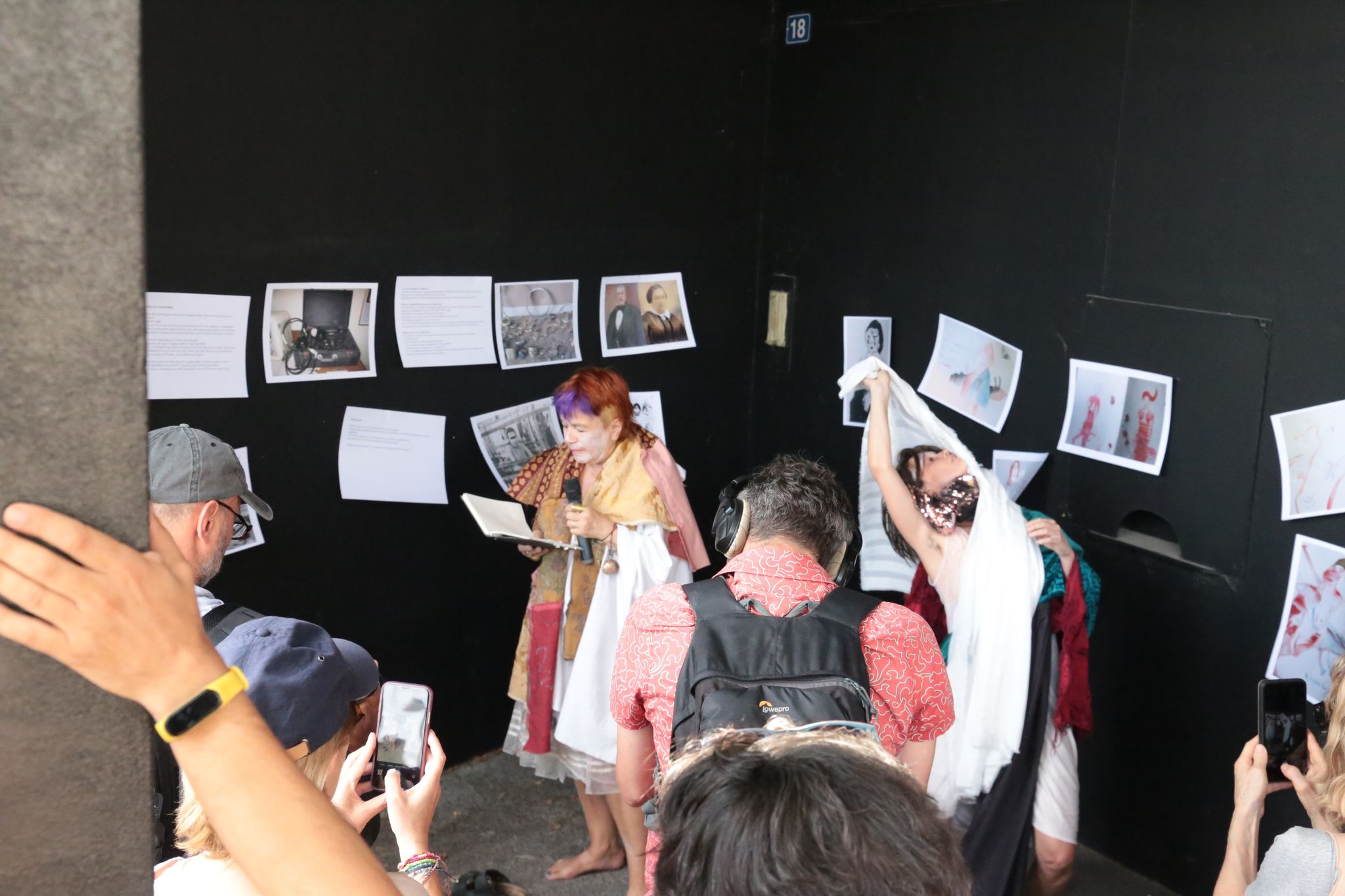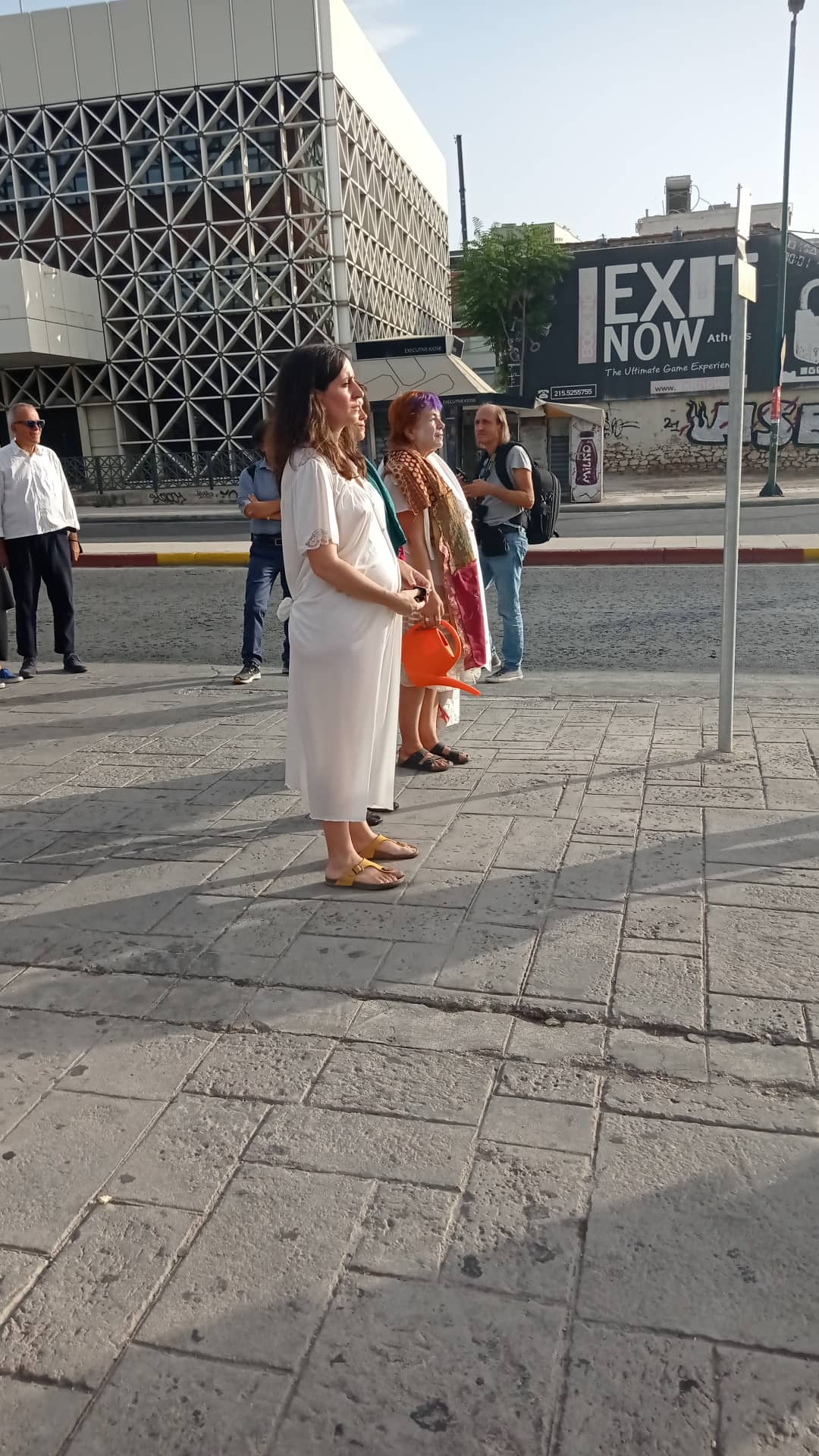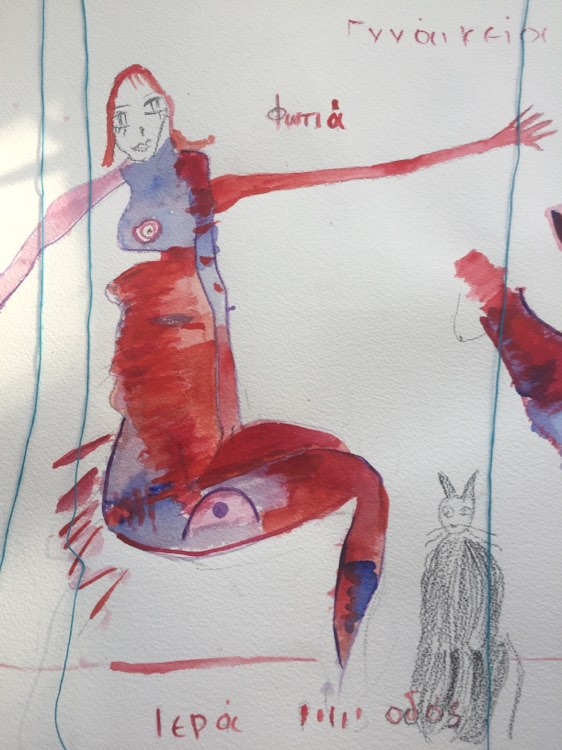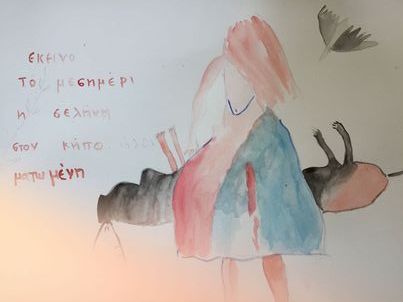“Woman Case”, a silent walking activity together with performances, is for the most part held along Iera Odos Avenue.
Eleni Tzirtzilaki, Urban Mythology
Curating: Bia Papadopoulou, Artemis Potamianou
Silent Walking Iera Odos-Leonidou-Filodimou
It is inspired by wild female nature; two goddesses –Demeter and Persephone; confinement in the Psychiatric Hospital (“Dromokaiteio”, which is located at 343 Iera Odos Ave.); a personal story; as well as women’s precarious-vulnerable position in general.
It derives from women suffering from mental problems, usually as a result of patriarchy and women’s place in family and society.
Exploring different conditions of women through minor incidents, poetry, movement, sound, pictures (archived material, painting) is my theme.
What would life be like otherwise, all the while bleeding?
Tears were unstoppable that morning, running from your pale eyes.
We were looking into the distance behind the railing, at the archaeological site and the ancient Iera Odos (“Sacred Way”), a low-level dirt track; at the far end stood the Acropolis. This is where the Eleusinian Mysteries were once held, starting from the Sacred Gate.
Here we dropped seeds and flowers. We wanted this to be a small ceremony for Demeter and her daughter, Persephone.
We started walking on the fields and among the olive trees. There used to be many animals whose tinkling bells we could hear. The fields and olive groves have been transformed; they’re now full of poorly designed buildings, made with low-quality materials, of dubious use, as if they were made to destroy the road’s sacredness.
The three women walking along Iera Odos were wearing underskirts with lace and braids. One of them was pregnant.
Our walk was slow and silent. It was a ritual coming down to us from the past.
We wished for sacredness, a sort of female ecstasy.
A female loving way was within us; a prior love that ran through our body. This was something essential we shared.
Along our way, few olive trees were left; we watered one of them, perhaps the oldest one.
We wanted to believe that we would once again see the landscape filled with olive groves and animals; that the now prevalent ugliness would vanish into thin air, and we would find ourselves walking among olive trees.
At the first plot on Iera Odos, we tore pieces off the house’s wall; they were layers on top of layers, colourful mortars.
Wasn’t our life like that too? There were times we wanted to shred it to pieces and see what’s inside.
Ilianna said: “You reminded me of women picking leafy greens. And of some women I had seen in Berlin in 1990. Another friend said: “It was as if there was something secret uniting you”.
At the black box, I read aloud the poems written about my friend who was involuntarily taken from the island to “Dromokaiteio” Psychiatric Hospital, escorted by police. My reading is fragmented, intentionally interrupted by sounds and transformed through movement. Pictures are put on the black wall; glimpses of life in the Psychiatric Hospital; I was struck by the rings of women who went through there –just imagine the rings were taken from them. Among the pictures I put my drawings, texts with what my friend has said about her time in “Dromokaiteio”, and other texts based on the little information I found for the women therein.
How did the audience here respond? They were trying to understand, to piece together fragments.
“Dromokateio” Psychiatric Hospital was initially called a “mental care home” and it began to operate in 1887 with a donation by the merchant Dromokaitis whose partner, Tarsi, suffered from a mental illness.
Well-known are the “Salpêtrière” (1656) in Paris, where exclusively women were hospitalized and treatment was associated with confinement and punishment, and the psychiatric hospital for women on the island of San Clemente, Venice.
We took a turn to Leonidou Str. At its corner, we stopped at the long-abandoned building with rusty metals that used to house a craft. Here, Roula hang various metal objects and produced sounds as she brought them in contact with rusty metals. Danai danced. I read aloud the poem about the Dyeing Shop.
To me, the street and the building were reminiscent of the dyeing shop-laundry my parents used to own on Leonidou Str. before I was born. Antigoni, my mother’s sister, who used to work there herself, had spoken to me about it on a day when we came to Kerameikos for lunch. The Dyeing shop was here. It had barely opened when my father was sent to exile on the island of Makronisos, and my mother and aunt were dyeing and cleaning garments. They had come from Chania, Crete, and the place felt unfamiliar. Who were their customers? The women from the brothels in the surrounding streets. Like aunt Antigoni used to say, they were softly speaking and warm, made jokes and lightened up sorrowful days.
We headed for the inner alley that was reminiscent of an island.
We invited women without opposing men’s presence –to stitch words on a white tablecloth. What does stitching words mean? Women always shared feelings while stitching or embroidering. It helped. It was a relief. Threads, needles, fabrics were found all around … and here we are stitching words related to our wounds, our scarves, our wishes… Among us were a woman from Argentina and a young girl from Seville. The women from the shut house came out; the old lady hadn’t come out in months; she joined us, and so did her daughter, in this makeshift yard. Words stitched: close, melancholy, trust, paz, animales…
text: Eleni Tzirtzilaki
Danai Manolesou(movement),Roula Kouvara(sound)Ernestina Karistinaiou Efthimiatou(collaboration)Υdra Pardos(inspiration)
Materials: roads (Iera odos -Leonidou-Filodimou),bodies, voices, textiles, thread, archives, poems, photos, paintings, water, seeds.
Duration: 1.30





